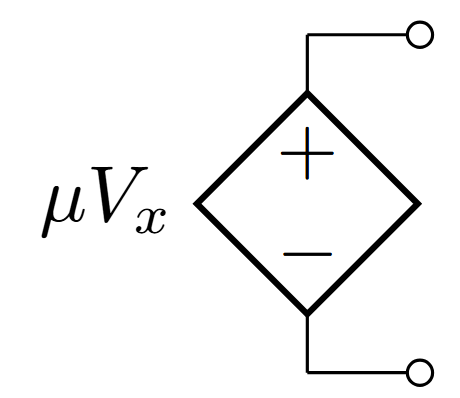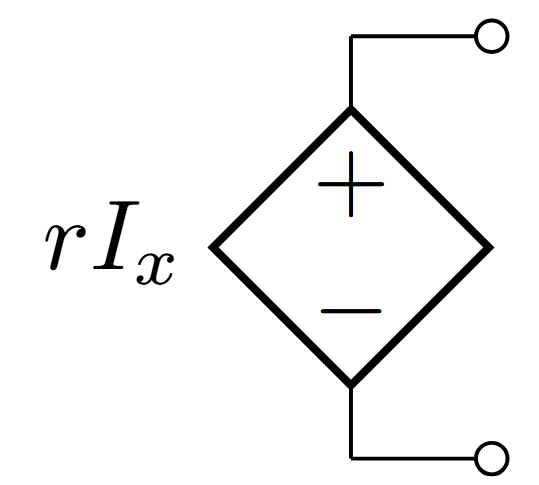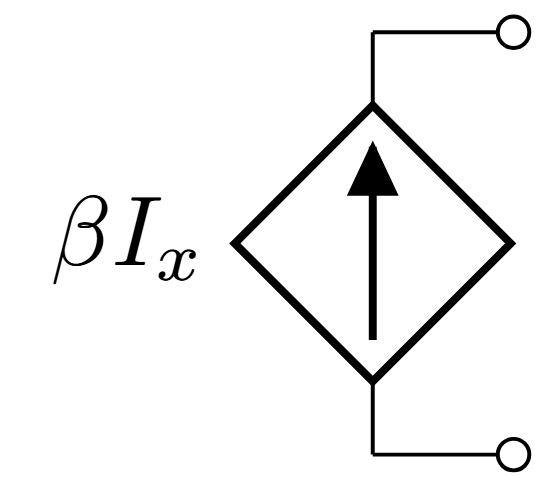Ideal Voltage Sources
Ideal Voltage Source
Definition:
-
Maintains constant voltage across terminals
-
Independent of current through it
-
Internal resistance = 0
Key Properties:
-
\(V = V_s\) (constant)
-
Current \(I\) can be any value
-
Power delivered: \(P = V_s \cdot I\)
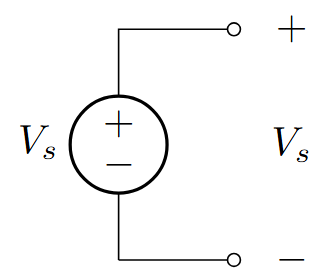
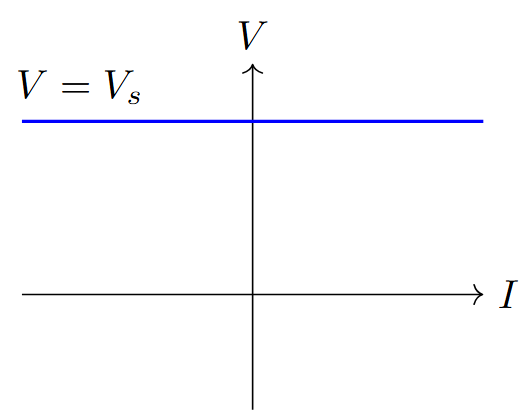
Ideal Current Sources
Ideal Current Source
Definition:
-
Maintains constant current through terminals
-
Independent of voltage across it
-
Internal resistance = \(\infty\)
Key Properties:
-
\(I = I_s\) (constant)
-
Voltage \(V\) can be any value
-
Power delivered: \(P = V \cdot I_s\)
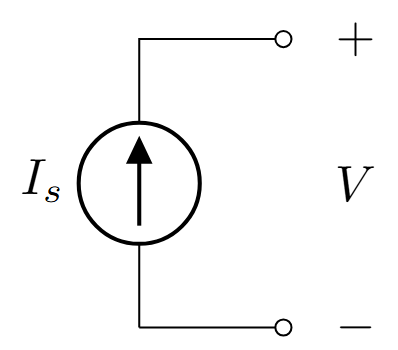
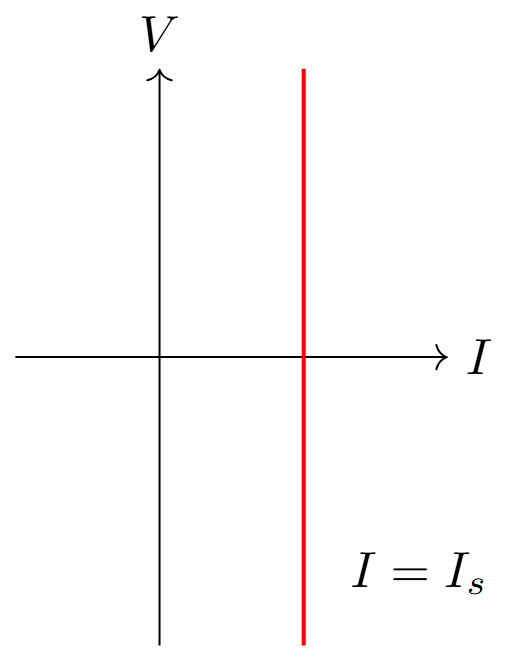
Dependent Sources
Dependent Sources - Types
-
Voltage Controlled Voltage Source (VCVS)
Voltage Controlled Voltage Source
-
Current Controlled Voltage Source (CCVS)
Current Controlled Voltage Source
-
Voltage Controlled Current Source (VCCS)
Voltage Controlled Current Source
-
Current Controlled Current Source (CCCS)
Current Controlled Current Source
Resistor (R)
Resistor - Properties
Ohm’s Law:
Power Relations:
Key Properties:
-
Linear element
-
Passive element (absorbs power)
-
Instantaneous relationship
-
Energy is dissipated as heat
Series & Parallel:
-
Series: \(R_{eq} = R_1 + R_2 + \ldots\)
-
Parallel: \(\frac{1}{R_{eq}} = \frac{1}{R_1} + \frac{1}{R_2} + \ldots\)
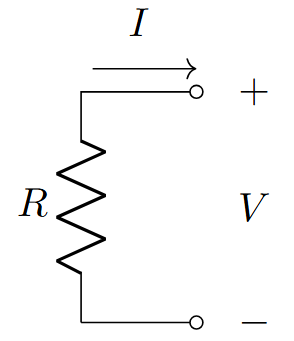
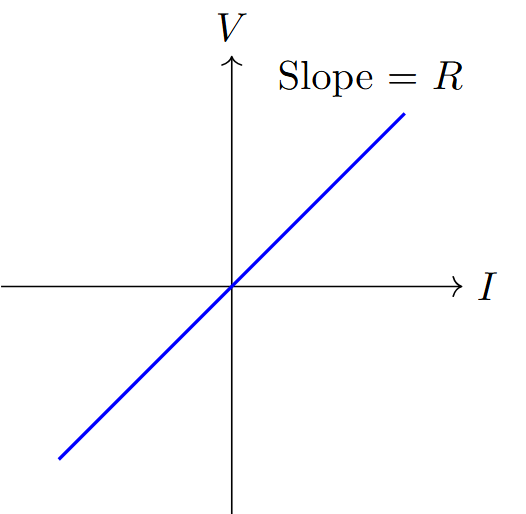
Inductor (L)
Inductor - Properties
V-I Relationship:
Energy Stored:
Key Properties:
-
Reactive element
-
Opposes change in current
-
Current cannot change instantaneously
-
\(I(0^-) = I(0^+)\) (continuity)
-
Stores magnetic energy
Series & Parallel:
-
Series: \(L_{eq} = L_1 + L_2 + \ldots\)
-
Parallel: \(\frac{1}{L_{eq}} = \frac{1}{L_1} + \frac{1}{L_2} + \ldots\)

AC Impedance:
DC Behavior:
-
Steady state: Short circuit
-
\(\frac{di}{dt} = 0 \Rightarrow V = 0\)
Capacitor (C)
Capacitor - Properties
V-I Relationship:
Energy Stored:
Key Properties:
-
Reactive element
-
Opposes change in voltage
-
Voltage cannot change instantaneously
-
\(V(0^-) = V(0^+)\) (continuity)
-
Stores electric energy
Series & Parallel:
-
Series: \(\frac{1}{C_{eq}} = \frac{1}{C_1} + \frac{1}{C_2} + \ldots\)
-
Parallel: \(C_{eq} = C_1 + C_2 + \ldots\)

AC Impedance:
DC Behavior:
-
Steady state: Open circuit
-
\(\frac{dv}{dt} = 0 \Rightarrow I = 0\)
Mutual Inductance (M)
Mutual Inductance - Coupled Coils
Coupled Equations:
Coupling Coefficient:
Energy Stored:
Dot Convention:
-
Same dot: \(+M\) (aiding)
-
Different dot: \(-M\) (opposing)

AC Analysis:
Summary Table
Network Elements - Summary
| Element | V-I Relation | Power | Energy | AC Impedance |
|---|---|---|---|---|
| Resistor | \(V = IR\) | \(P = I^2R\) | Dissipated | \(R\) |
| Inductor | \(V = L\frac{di}{dt}\) | \(P = Vi\) | \(W = \frac{1}{2}LI^2\) | \(j\omega L\) |
| Capacitor | \(I = C\frac{dv}{dt}\) | \(P = Vi\) | \(W = \frac{1}{2}CV^2\) | \(\frac{1}{j\omega C}\) |
| Voltage Source | \(V = V_s\) | \(P = V_s I\) | - | - |
| Current Source | \(I = I_s\) | \(P = V I_s\) | - | - |
Important GATE Points:
-
Initial conditions for L and C
-
Series/parallel combinations
-
Dependent source analysis
-
Energy and power calculations
-
AC impedance concepts
